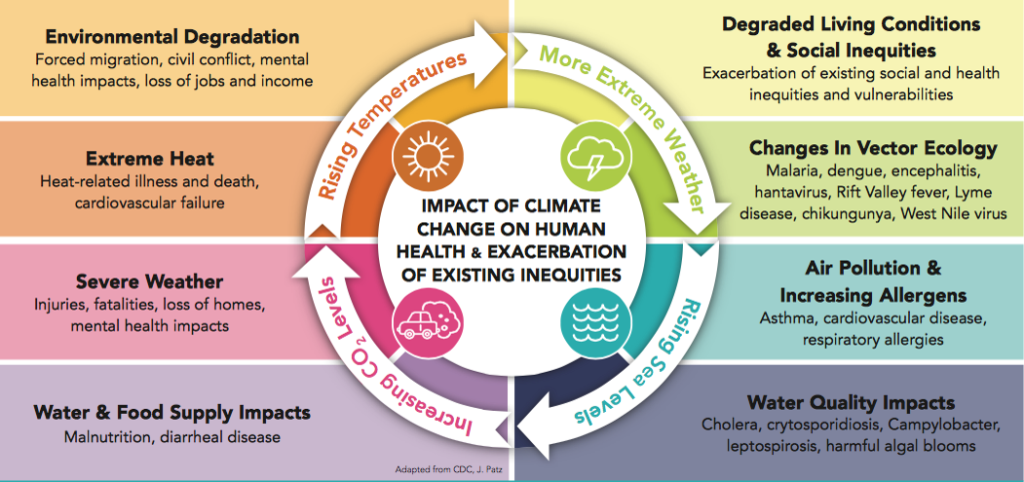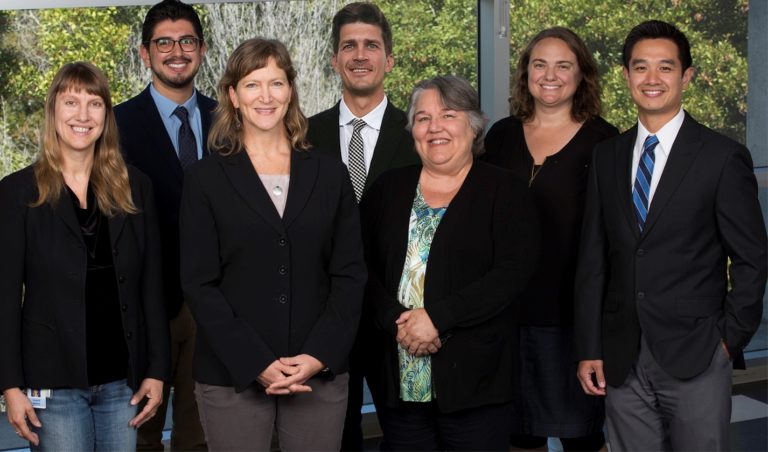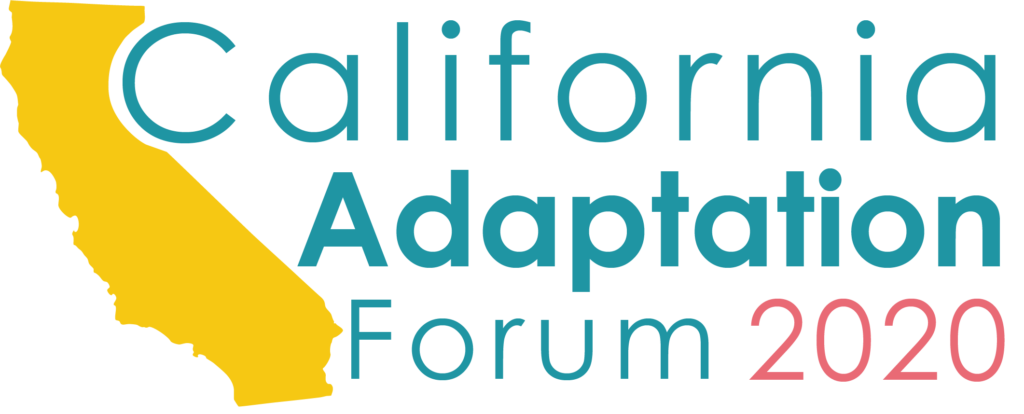Photo Credit: Ghetty Images
“For public health, climate change is the defining issue for the 21st century.” —Margaret Chan, Former Director-General of the World Health Organization
Climate change threatens the health and well-being of California’s diverse population of nearly 38 million people and poses immense challenges for achieving health equity. Climate change impacts health through environmental changes, including more extreme heat and other severe weather events, a decline in air quality, more frequent wildfires, increases in allergens, and altered environmental conditions that foster the spread of communicable and other diseases. Climate change also threatens the basic life support systems on which humans depend—water, food, shelter and security. The resulting human health impacts include increases in the risk of asthma, allergies and other respiratory ailments, cardiovascular disease, vector borne diseases, mental health impacts, civil conflicts and migrations, malnutrition, injuries, and heat-related illness and death.
These challenges amplify health inequities among the state’s most vulnerable populations, making climate change a threat multiplier. While all Californians are impacted by climate change, the populations most vulnerable to the health impacts of climate change are the same communities that experience health inequities, or systemic differences in health status that are preventable and unfair. Low-income families, some communities of color, people with existing health conditions such as chronic diseases and mental health problems, children and seniors, people experiencing homelessness, outdoor workers and farmers, immigrants, especially those with undocumented status, tribal nations, and isolated people are most vulnerable to the impacts of climate change.

Climate change and health inequities share similar root causes: the inequitable distribution of social, political and economic power. These power imbalances result in systems (economic, transportation, land use, etc.) and conditions that drive both health inequities and greenhouse gas (GHG) emissions. As a result, we see communities with inequitable living conditions, such as low-income communities of color living in more polluted areas, facing climate change impacts that compound and exacerbate existing sensitivities and vulnerabilities. Fair and healthy climate action requires addressing the inequities that create and intensify community vulnerabilities.
The good news is that addressing climate change could represent the greatest opportunity to improve public health in our time. Many actions that limit climate change also improve the health of families and communities and reduce health inequities. The capacity for climate resilience is significantly driven by living conditions and the forces that shape them, such as income, education, housing, transportation, environmental quality, and access to services. Thus, strategies such as alleviating poverty, increasing access to opportunity, improving living conditions, and reducing health and social inequities will result in more climate resilient communities. Public health engagement in climate change is essential to ensure that climate action strategies promote optimal health, well-being, and equity.
Health is a strong motivator for climate action. Many climate change prevention (mitigation) and preparedness (adaptation) strategies have beneficial effects on health and quality of life. These “win-win” strategies include active transportation, urban greening, mixed-use zoning, consumption of locally-grown produce, and affordable, healthy, and energy-efficient housing. Health benefits of these strategies can include reductions in obesity, some chronic diseases, respiratory illnesses, and injury, and improved community cohesion and mental health.
There are opportunities to incorporate health equity into the state’s efforts to address climate change through CDPH’s Climate Change and Health Equity Program (CCHEP), which is based in the Office of Health Equity (OHE). The program works to embed health and equity into California’s climate change planning, and to embed climate change and equity into public health planning by working with state, local and community-based partners. The Climate Change and Health Equity Program works in the following areas:
- Supporting local health departments in climate change and health planning
- Promoting health benefits of taking action to curb climate change
- Developing climate change and health communication strategies
- Evaluating health effects of climate change mitigation and adaptation strategies
- Preparing climate change and health plans for the state
- Working with other state agencies to assure that health and equity are considered in California’s climate planning
- Engaging with community groups working to promote health equity and environmental justice
California has passed some of the nation’s strongest legislation to mitigate and adapt to the impacts of climate change. There is an unprecedented opportunity for statewide leadership in both climate action and public health to come together to create healthy, equitable, and resilient communities where all people thrive.
 |
The Climate Change and Health Equity Program (CCHEP) embeds health and equity in California climate change planning, and embeds climate change and equity in public health planning. CCHEP works with local, state, and national partners to assure that climate change mitigation and adaptation activities have beneficial effects on health while not exacerbating already existing unfair and preventable differences in health status of some groups (health inequities). CCHEP implements California’s climate change laws and executive orders, contributing health equity considerations. |

